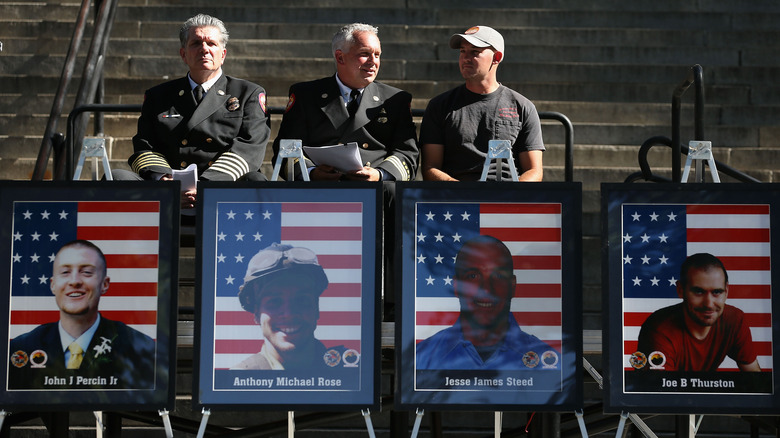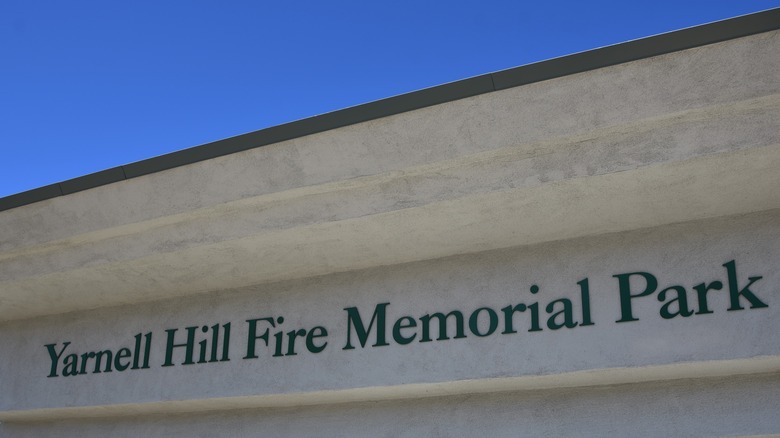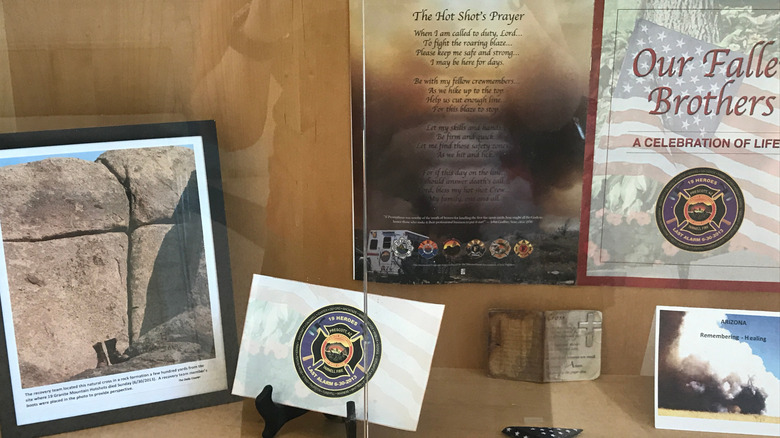Tragic Details About The Deadly 2013 Yarnell Hill Fires
Fire is a potent, petrifying, powerful force. For better and for worse, it has been entwined with the human experience for many, many years. From candles to light our homes to candles with a diverse array of lovely fragrances, from fires for cooking to fires for burning coal, it's a force we've been learning to harness for almost half a million years — perhaps even longer.
The June 2016 study "The discovery of fire by humans: a long and convoluted process," by J. A. J. Gowlett (via Philosophical Transactions of the Royal Society B), considers just how long we have known of and utilized fire. "From around 400,000 years ago, traces of fire become much more numerous on many sites, including numbers in Europe and the Middle East as well as Africa and Asia," Gowlett writes.
Though there's no saying which prehistoric bright spark first hit upon the notion of harnessing power for their own ends, one thing's for certain: they probably got burned. Our history is defined by creations such as the internal combustion engine, which necessitates fire in one way or another. It is also, tragically, littered with deadly disasters, both natural and otherwise, that resulted from its fury. The Yarnell Hill Fires of 2013 are among the most infamous in recent memory.
The first sparks of a wildfire
The Yarnell Fire, the National Weather Service reports, raged for around two weeks, beginning on June 28, 2013. Unlike fires that start in homes from appliances left on or candles left unattended, this disaster began outdoors. A deadly combination of natural conditions combined to create the perfect scenario for the tragedy.
Yarnell, Arizona had been decidedly dry that year. This meant that the nearby hills were beset by dry lightning. Per CNN, this phenomenon happens during times of drought and is the result of a unique type of storm: one in which the accompanying rain does not fall because it simply evaporates in the warm air before doing so.
These two factors were basically a disaster waiting to happen, according to the National Weather Service. The area where the fire began was struck by more than 40 bolts of lightning. One of them hit a parched area of plant land, which was set aflame.
As its immediate vicinity was essentially kindling, the flames quickly gathered pace and became ferocious. National Centers For Environmental Information adds that June 30th marked another increase in the temperature, bolstering the fire (which had previously not spread uncontrollably) to the devastating levels it would later reach.
The heroic efforts of the Hotshots
In June 2014, Richard C. McCrea, writing for the International Association of Wildland Fire, explained the nature of the disaster. The flames "rapidly transitioned from a low complexity fire to a very high complexity fire," McCrea states, "due to the increased fire behavior and values at risk." Relatively contained at first, the increasing heat allowed the fire to gather more momentum.
National Centers For Environmental Information states that by 4:30 pm on June 30th, storms and ferocious winds (around 44 mph) rendered the fire unpredictable and deadly. The Granite Mountain Hotshots, the firefighters, did not foresee the change in direction the blaze took. Blown back on itself by the speed of the winds, McCrea writes that the Hotshots were fighting the blaze from above when the flames came back up the hill towards them. The entrapment resulted in the tragic deaths of 19 firefighters.
The fire burned its way through 8,400 acres over the following days. Yarnell's population had been evacuated for eight days when they were allowed back to their homes on July 8th, two days before the fire was contained (per the National Weather Service).
The brave members of the Hotshots who died are celebrated on Arizona State Parks' website, via the National Fallen Firefighters Foundation. One of these men was 23-year-old Robert Caldwell. "There simply aren't enough words to explain the love and gratitude I feel for him," Robert's proud wife, Claire, said.


